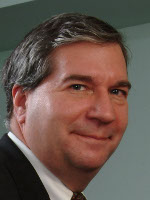Shedding light on the sunscreen nano-scare

Let me start at with a little background. You know the iconic image of a lifeguard with a white smear of sunscreen on his nose? The stuff that makes sunscreen white is zinc oxide, highly effective, but not particularly attractive. One of the earliest applications of nanotechnology was making the zinc oxide particles smaller -- nano-sized -- so they could do their job without the telltale pasty coating. These products have been around for about a decade without issue.
That track record didn’t seem to satisfy some zealots in Australia. So they began requiring manufacturers to include a statement on the label of nano-enhanced sunscreens. Guess what. Some self-serving marketers decided they could profit from a little fear-mongering and started labeling their products as “nanoparticle free.”
I could write a whole column on that bit of marketing flim-flam, but the story takes an even more bizarre turn. Some dogmatic nano-hunters did their own testing using their own methodology. They were looking not only for nanoparticles but also for “agglomerates and aggregates of nanoparticles,” that is, non-nanoscale materials made up of nanoparticles.
The Australian nanotech sunscreen uproar has been billed as an exposé, but it’s really just a calculated gotcha maneuver. These aggregates have never been shown to break down into individual nanoparticles, unless exposed to tremendous forces. Never. Not one time.
And now the manufactured panic wave from Down Under is spreading. Let me explain. I’ve been extraordinarily impressed by the way the U.S. is going about EHS policy for nanotechnology. It’s reasonable and scientific. Now, Australia’s sunscreen mania seemed to be hijacking our national discussion. According to some news reports I’ve read, it’s been bogging down some recent FDA working sessions. I believe it’s noise that our decision makers feel obligated to address, but it can easily become a distraction from the big questions they’re trying to work through.
Here’s the bright spot. In an effort for clarification, policymakers are thinking of approaching pharmaceutical companies for advice about how to frame the discussion. These are the people using nanoparticles to increase the amount of active ingredient delivered -- that is, to increase its effectiveness. Is there any group more carefully testing their efforts or more closely regulated? Perhaps, that could be a hint about the positive, knowledge-based approach that should guide the discourse and keep us moving forward without the panic attacks.
You can be part of the solution, too. Start by challenging naysayers with facts and proof. More important, prove them wrong by moving ahead with innovation. Every time you commercialize a safe, effective nanotechnology that solves a problem, makes life better, protects the environment, you shine a bright light that shows the way to the future.
Scott E. Rickert is CEO of Nanofilm Ltd. in Valley View, Ohio, near Cleveland.
Source: Industry Week
